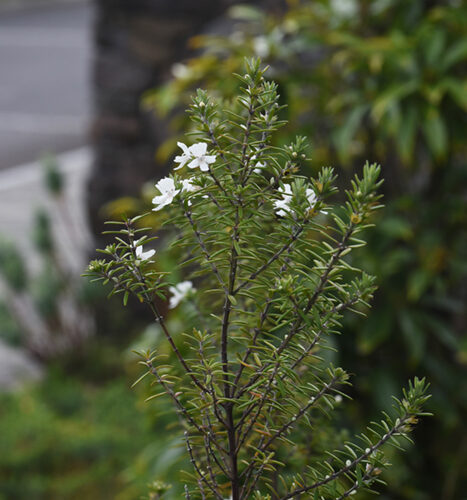Water conservation is an essential consideration when designing and managing Sonoma and Marin County landscapes. Our area enjoys a Mediterranean climate characterized by wet winters and long, dry summers with little rainfall. Plants that are suited or adapted to local conditions not only use less water but generally grow more successfully and robustly, with fewer insect and disease problems. They ultimately create a healthier, more beautiful and more sustainable landscape.
Below is a hand selected plant list for Sonoma and Marin counties that displays mostly native species that will thrive in our climate. You can search, filter and save specific plants to your plant list and also print plant cards.
-
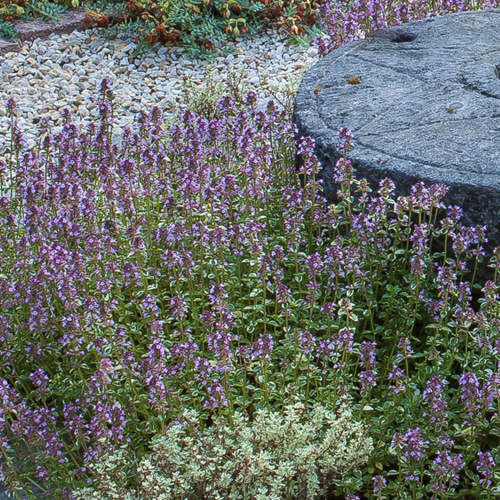
Thyme
Thymus spp -
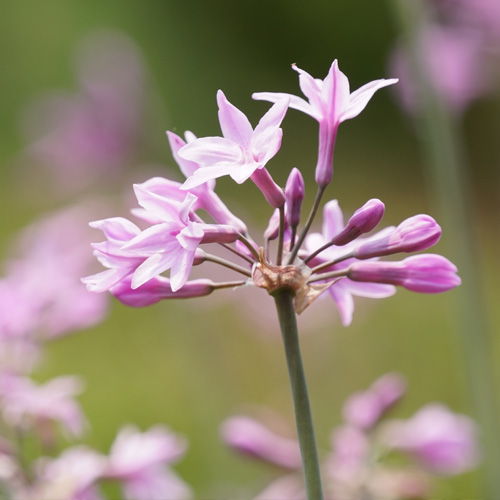
Society Garlic
Tulbaghia violacea -
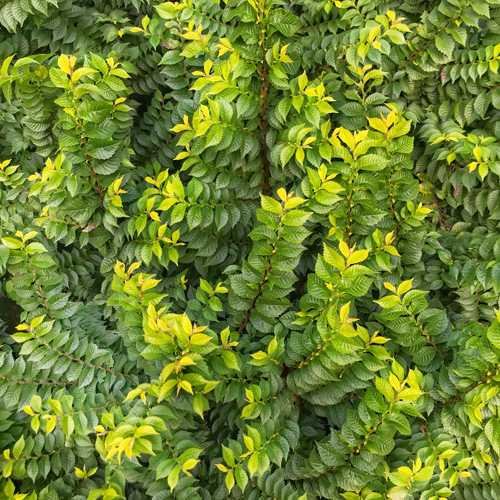
Chinese Evergreen Elm
Ulmus parvifolia 'Drake' -
California Native
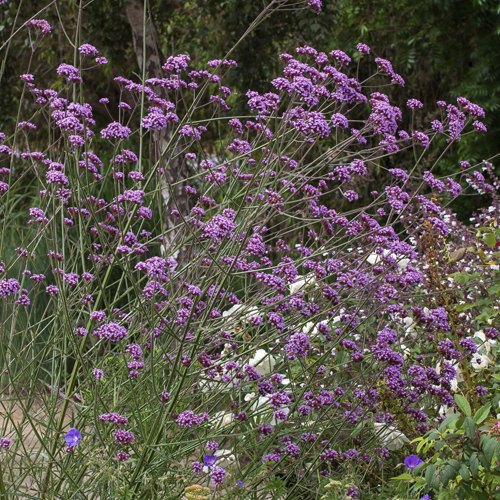
Verbena
Verbena spp -
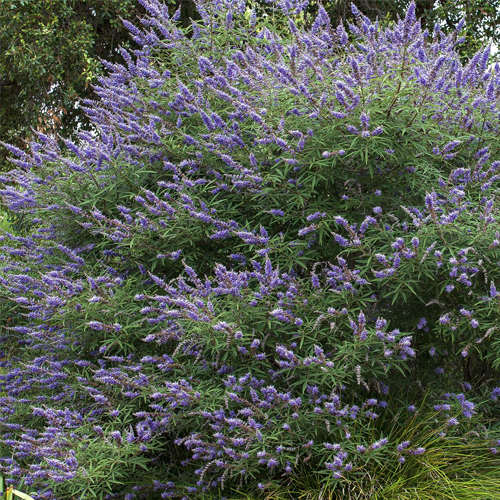
Chaste Tree
Vitex agnus-castus -
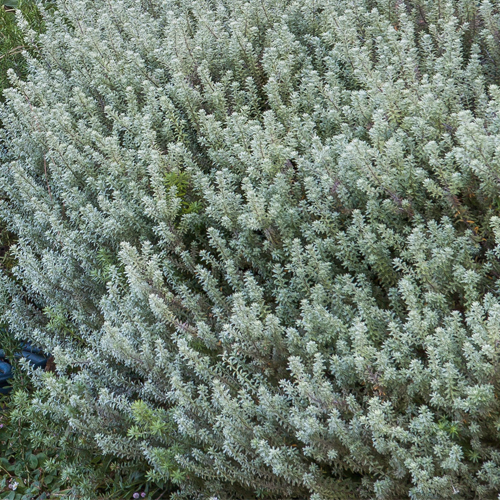
Coast Rosemary
Westringia spp -
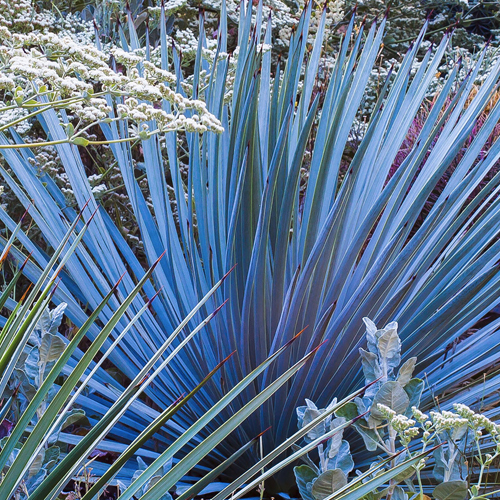
Yucca
Yucca spp -
California Native
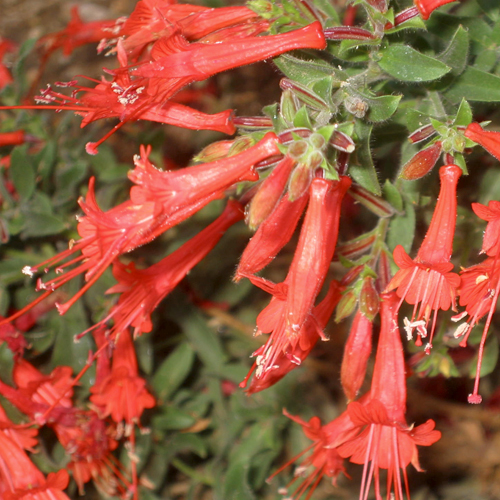
California Fuchsia
Zauschneria [Epilobium] spp


Thyme
Thymus spp
Ground Cover, Shrub
Care:

Full Sun

Partial Shade

Low

Well Drained
Look:

Small
size

Green
leaves

Lavender
flowers

Purple
flowers
Thyme
Thymus spp
Ground Cover, Shrub
Care:

Full Sun

Partial Shade

Low

Well Drained
Look:

Small
size

Green
leaves

Lavender
flowers

Purple
flowers
These aromatic Mediterranean perennials and sub-shrubs include many types used for culinary purposes, as well as others used as ornamental groundcovers.
Examples: The following examples are all available in many named varieties.
- Lemon thyme (T. x citriodorus, 1’ x 2’) has a lemony fragrance.
- Creeping thyme (T. praecox, 2-6” x 2-3’) provides an excellent groundcover between stepping stones.
- Woolly thyme (T. pseudolanuginosus [lanuginosus], 2-4” x 3’) has wooly gray leaves.
- Elfin thyme (T. serpyllum ‘Elfin’, 1-2” x 6-12”) is one of the smallest thymes with tiny leaves and a very compact growth habit.
- Common thyme (T. vulgaris, 1’ x 2’) and named varieties are most commonly used for culinary purposes.


Society Garlic
Tulbaghia violacea
Care:

Full Sun

Partial Shade

Low

Most Soils
Look:

Green
leaves

Lavender
flowers
Society Garlic
Tulbaghia violacea
Care:

Full Sun

Partial Shade

Low

Most Soils
Look:

Green
leaves

Lavender
flowers
Society garlic is the most commonly available from this group of South African perennials. Clumps of narrow, evergreen, strappy leaves are topped with tall flower stalks that display clusters of lavender flowers from spring through summer. Society garlic has a strong garlic-like odor!


Chinese Evergreen Elm
Ulmus parvifolia 'Drake'
Tree
Care:

Full Sun

Low

Most Soils
Look:

Large
size

Green
leaves
Chinese Evergreen Elm
Ulmus parvifolia 'Drake'
Tree
Care:

Full Sun

Low

Most Soils
Look:

Large
size

Green
leaves
Chinese evergreen elm has proven to be one of the most resistant species to Dutch elm disease and is a good choice for California gardens where a large tree is needed. This tree from China, Korea, and Japan has a broad, rounded canopy and is semi-evergreen in milder climate zones. Exfoliating bark provides additional interest. Several cultivars are available offering different leaf characteristics.


Verbena
Verbena spp
CA Native
Care:

Full Sun

Very Low

Low

Well Drained
Look:

Medium
size

Small
size

Green
leaves

Pink
flowers

Purple
flowers

Red
flowers

White
flowers
Verbena
Verbena spp
CA Native
Care:

Full Sun

Very Low

Low

Well Drained
Look:

Medium
size

Small
size

Green
leaves

Pink
flowers

Purple
flowers

Red
flowers

White
flowers
Fast-growing perennials that thrive in hot locations and produce clusters of small, showy flowers in summer.
Examples:
- V. bonariensis (3-6’ x 2-3’) is an upright perennial from South America with long, airy flower stalks. Reseeds readily and should not be planted near riparian areas where it can be invasive.
- Garden verbena (V. x hybrida, 6-12” x 2-3’) is a popular and showy groundcover available in many colors.
- Cedros Island verbena (V. lilacina ‘De La Mina’, 1-2’ x 2-3’) from the Cedros Island off the coast of Baja California is a popular native for its deep purple flower color and uniform growth habit.


Chaste Tree
Vitex agnus-castus
Shrub, Tree
Care:

Full Sun

Low

Well Drained
Look:

Gray Green
leaves

Blue
flowers

Lavender
flowers
Chaste Tree
Vitex agnus-castus
Shrub, Tree
Care:

Full Sun

Low

Well Drained
Look:

Gray Green
leaves

Blue
flowers

Lavender
flowers
Attractive deciduous shrub or small tree from the Mediterranean region to central Asia that produces spikes of fragrant lavender-blue flowers in summer into fall. Several varieties provide white or pink flowers.


Coast Rosemary
Westringia spp
Shrub
Care:

Full Sun

Low

Most Soils
Look:

Green -Light
leaves

Variegated
leaves

Lavender
flowers
Coast Rosemary
Westringia spp
Shrub
Care:

Full Sun

Low

Most Soils
Look:

Green -Light
leaves

Variegated
leaves

Lavender
flowers
Australian evergreen shrubs that are well-adapted to California gardens. W. fruticosa (3-6’ x 5-10’) is a mounding shrub with green-to-gray-green, needle-like leaves and small white or lavender flowers from winter into spring. W. ‘Wynyabbie Gem’ (6-8’ x 6-8’) has a more upright habit and lavender-blue flowers.


Yucca
Yucca spp
Shrub
Care:

Full Sun

Partial Shade

Very Low

Low

Well Drained
Look:

Blue Gray
leaves

Blue Green
leaves

White
flowers
Yucca
Yucca spp
Shrub
Care:

Full Sun

Partial Shade

Very Low

Low

Well Drained
Look:

Blue Gray
leaves

Blue Green
leaves

White
flowers
Evergreen shrubs and perennials that grow over much of North America and feature sword-shaped leaves. Yuccas typically produce flowers on tall stalks in spring. Some yuccas are stemless while others have trunks and grow to tree size.
Examples: Banana yucca (Y. baccata, 3-4’ x 4-5’) eventually forms a short trunk. Adam’s needle (Y. filamentosa, 2-3’ x 4’) has loose fibers at the edge of leaves. Others are Spanish dagger (Y. gloriosa, 10’ x 8’), beaked yucca (Y. rostrata, 12-15’), and our Lord’s candle (Y. whipplei, 2-4’ x 3-6’), native to Southern California and Baja California.


California Fuchsia
Zauschneria [Epilobium] spp
CA Native
Care:

Full Sun

Low

Well Drained
Look:

Gray Green
leaves

Green
leaves

Orange
flowers

Pink
flowers

Red
flowers

White
flowers
California Fuchsia
Zauschneria [Epilobium] spp
CA Native
Care:

Full Sun

Low

Well Drained
Look:

Gray Green
leaves

Green
leaves

Orange
flowers

Pink
flowers

Red
flowers

White
flowers
Group of highly variable, semi-evergreen subshrubs and herbaceous perennials distributed over a wide geographic area, including California. Epilobiums bloom in late summer with tubular flowers providing a food source for hummingbirds migrating south and are also attractive to bees and butterflies. Epilobiums range from low-growing groundcovers to upright plants of several feet. Flower colors include orange-red, white, pink, and salmon. Most can be pruned back in late autumn to maintain a more compact form and be rejuvenated for the following year.
Low-growing examples: E. ‘Schieffelin’s Choice’; E. canum ‘Calistoga’, a selection from Phil Van Soelen from California Flora Nursery from the Palisades east of Calistoga; E. canum ‘Cloverdale’, a selection from U.C. Santa Cruz Arboretum from along the Russian River north of Cloverdale with exceptionally orange flowers; E. c. ‘Everett’s Choice’, E. c. ‘Summer Snow’ with white flowers, and E. septentrionale ‘Select Mattole’, a somewhat redder flowering selection that is more shade-tolerant.
Upright examples: E. c. ‘Bowman’s Hybrid’ (2-3’), E. c. ‘Catalina’ (3-4’), E. c. ‘Liz’s Choice’ (3’) selected by Milo Baker Chapter CNPS Fellow Liz Parsons, E. c. ‘Marin Pink’ (2’) with pink flowers.
 Print this plant card
Print this plant card
